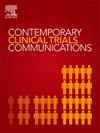Demographic clinical trial diversity assessment methods: Use of real-world data
IF 1.4
Q4 MEDICINE, RESEARCH & EXPERIMENTAL
引用次数: 0
Abstract
Diversity in clinical trials is defined by the inclusion of clinical trial participants from various demographic groups that are representative of the broader population impacted by a disease state. Diversity in clinical trials is critical in identifying potential differences in safety and efficacy of treatments across races, ethnicities, ages, sexes, or other variables. In the United States, clinical trial diversity is often benchmarked against US Census data, which may limit the representativeness of patient demographics in clinical trials. Disease-specific, demographic estimates from real-world data (RWD) can facilitate benchmarking of clinical trials, support trial enrollment and the development of trial diversity plans. Notably, development and dissemination of these estimates from RWD can be challenging without a standardized process. To address this issue, we developed a new evaluation framework to assess patient demographics and characteristics within specific disease populations using RWD and disease population estimates.
Suitable databases were identified using predefined criteria such as accessibility to patient-level data, availability of all demographic variables of interest, sufficient sample size of the disease population, and availability of population weights to enhance generalizability. Concurrent data were gathered via targeted literature reviews for each disease condition. Together, this data was used to create disease-specific, demographic estimate profiles to inform diverse enrollment goals for prospective clinical trials. We present two examples of application of this framework to illustrate the results in the case of two disease states, rheumatoid arthritis and stroke.
求助全文
约1分钟内获得全文
求助全文
来源期刊

Contemporary Clinical Trials Communications
Pharmacology, Toxicology and Pharmaceutics-Pharmacology
CiteScore
2.70
自引率
6.70%
发文量
146
审稿时长
20 weeks
期刊介绍:
Contemporary Clinical Trials Communications is an international peer reviewed open access journal that publishes articles pertaining to all aspects of clinical trials, including, but not limited to, design, conduct, analysis, regulation and ethics. Manuscripts submitted should appeal to a readership drawn from a wide range of disciplines including medicine, life science, pharmaceutical science, biostatistics, epidemiology, computer science, management science, behavioral science, and bioethics. Contemporary Clinical Trials Communications is unique in that it is outside the confines of disease specifications, and it strives to increase the transparency of medical research and reduce publication bias by publishing scientifically valid original research findings irrespective of their perceived importance, significance or impact. Both randomized and non-randomized trials are within the scope of the Journal. Some common topics include trial design rationale and methods, operational methodologies and challenges, and positive and negative trial results. In addition to original research, the Journal also welcomes other types of communications including, but are not limited to, methodology reviews, perspectives and discussions. Through timely dissemination of advances in clinical trials, the goal of Contemporary Clinical Trials Communications is to serve as a platform to enhance the communication and collaboration within the global clinical trials community that ultimately advances this field of research for the benefit of patients.
 求助内容:
求助内容: 应助结果提醒方式:
应助结果提醒方式:


